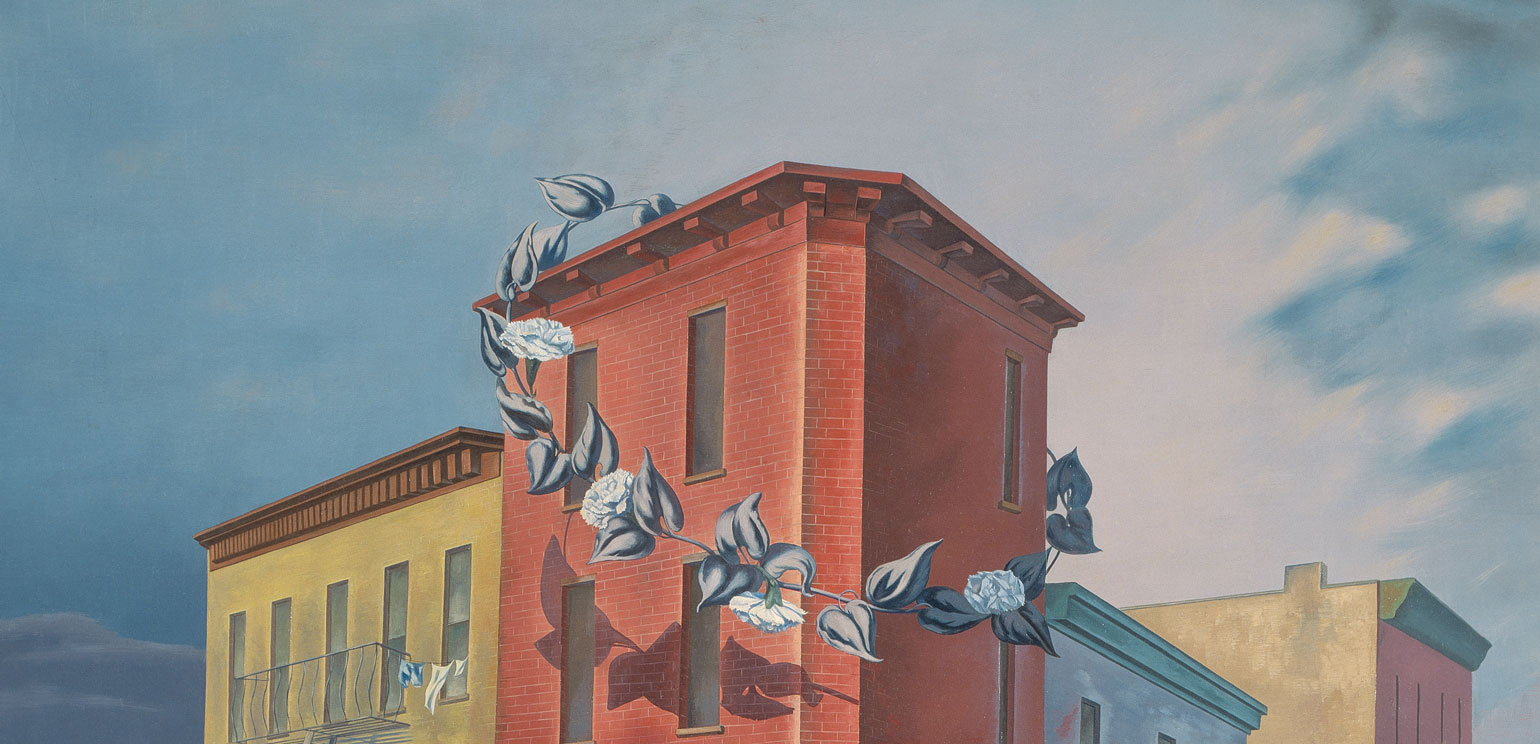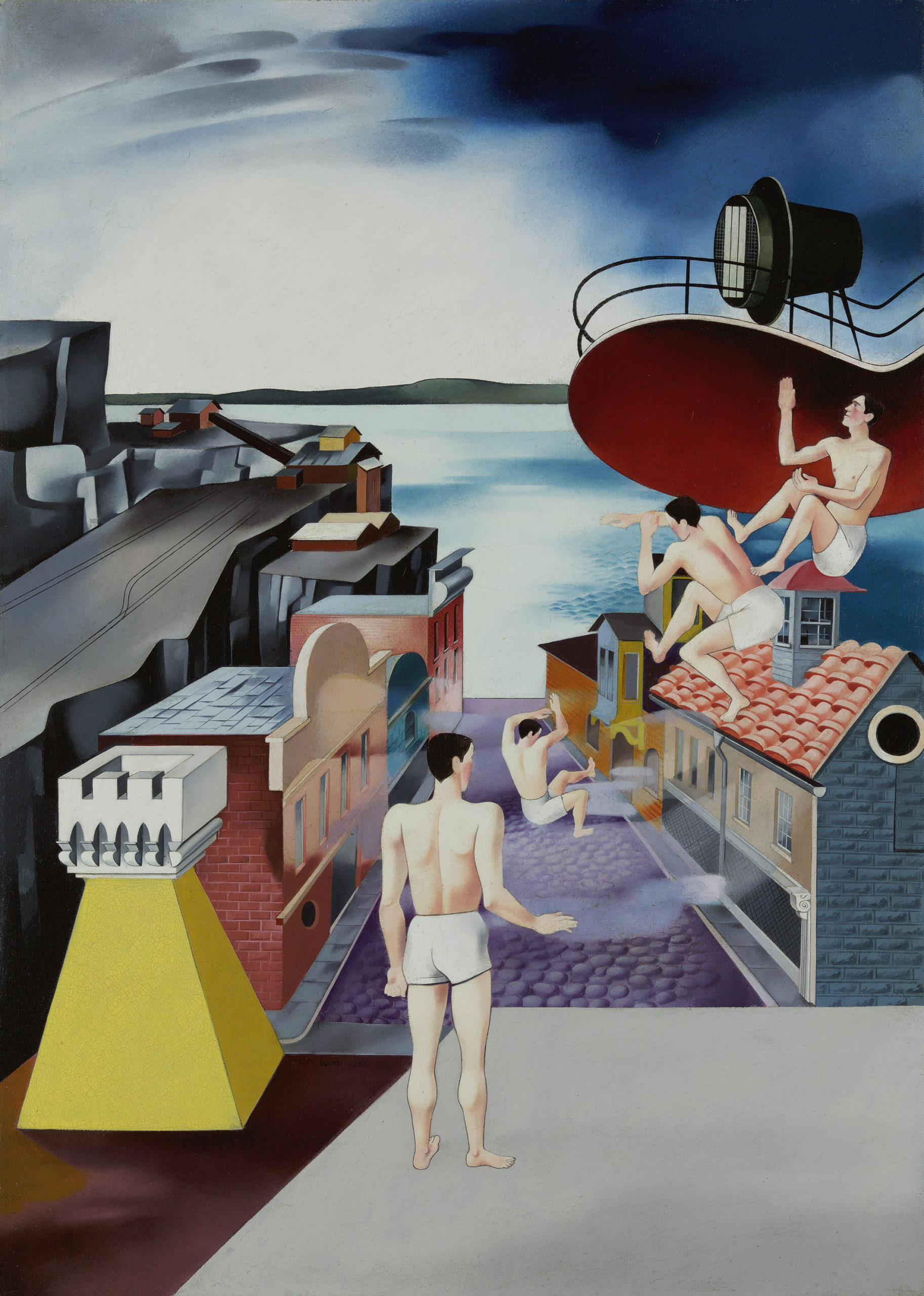The Georgia Museum of Art at the University of Georgia
Through Sunday, Jun 13, 2021

Saturday, Feb 27, 2021 —
“Extra Ordinary” surveys a range of American artists who embraced realism, representation and classical artistic techniques in the face of the rising tide of abstraction at mid-century. Through sharp focus, suggestive ambiguity and an uncanny assemblage of ordinary things, their works not only show that the extraordinary is possible, but also conjure the strangeness and wonder of everyday life.
Long overshadowed by the rise of abstract expressionism in the 1950s, magic realism’s reputation is on the way up again. The Georgia Museum of Art at the University of Georgia will present the exhibition “Extra Ordinary: Magic, Mystery and Imagination in American Realism” from February 27 to June 13, 2021, seeking to reexamine how we define magic realism and expand the canon of artists who worked within this category.
The term “magic realism” was popularized in 1943 during the exhibition “American Realists and Magic Realists” at the Museum of Modern Art (MoMA), organized by curator Dorothy C. Miller with assistance from museum director Alfred H. Barr Jr. and arts impresario Lincoln Kirstein. The Georgia Museum of Art’s exhibition will include works originally presented in MoMA’s show, including paintings by Ivan Albright, Paul Cadmus, Z. Vanessa Helder and Patsy Santo, as well as other objects by many of the artists it featured.
Magic realism is often compared to surrealism, but while surrealism focuses on the life of the mind, magic realism is grounded in the real world, showing fantastical elements as a part of everyday life. The mood of magic realist works of art is often eerie and uncanny. Mystical components add to their mystery and invite viewers to look more closely. Magic realists were inspired by the German movement known as New Objectivity, and they also adapted aspects of European surrealism into an American visual language.
Jeffrey Richmond-Moll, curator of American art at the museum, organized the exhibition. He said, “Magic realism was very much rooted in ordinary life and was commenting very directly on the everyday experience of people in the United States — from wartime life and its aftermath to key social issues like race and civil rights or workers’ rights, to pressing environmental issues of the time.”
“Extra Ordinary” takes on the challenge of defining magic realism and organizing a diverse group of artists into one style – a style that may be unfamiliar to American audiences and has often been overlooked. The exhibition also emphasizes, in critic Clement Greenberg’s words, “the extreme eclecticism now prevailing” in the American art world during the mid-1900s. In so doing, it highlights a wider constellation of artists — including such women as Gertrude Abercrombie and Honoré Sharrer, such artists of color as Eldzier Cortor and Hughie Lee-Smith, and other artists from farther-flung regions such as Everett Spruce and Patrick Sullivan — who also turned to the mysterious, supernatural and hyperreal to examine key social issues of the day. These artists embraced magic or fantasy not as a means to escape everyday reality but as a way to engage more directly with it.
The exhibition is drawn primarily from two private collections with exceptional holdings in the magical realist genre, as well as major paintings in our own collection by Paul Cadmus, O. Louis Guglielmi, John Brock Lear, and others. It takes as its point of departure the 1943 show “American Realists and Magic Realists” at the Museum of Modern Art — when the term “magic realism” entered the American art historical lexicon — and will feature a suite of paintings originally included in MoMA’s show. By bringing together significant works by Ivan Albright, Cadmus, Philip Evergood, Jared French, Henry Koerner, George Tooker and John Wilde, along with a number of lesser known artists, “Extra Ordinary” reveals the slippery task of categorizing this eccentric group of painters into a single style. After all, the canon of artists we now identify as “magic realists” was codified through a series of exhibitions organized by curators Alfred H. Barr, Dorothy C. Miller and Lincoln Kirstein, among others.

“Extra Ordinary” also emphasizes, in critic Clement Greenberg’s words, “the extreme eclecticism now prevailing” in the American art world during this period. In so doing, it highlights a wider constellation of artists — including such women as Gertrude Abercrombie and Honoré Sharrer, such artists of color as Eldzier Cortor and Hughie Lee-Smith, and other artists from farther-flung regions such as Everett Spruce and Patrick Sullivan — who also turned to the mysterious, supernatural and hyperreal to examine key social issues including the dignity of the working class, wartime trauma and environmental concerns. These artists embraced magic or fantasy not as a means to escape everyday reality but as a way to engage more directly with it.
